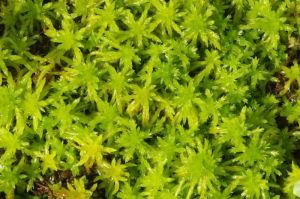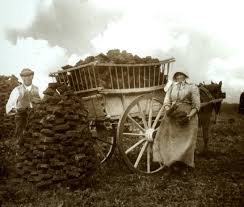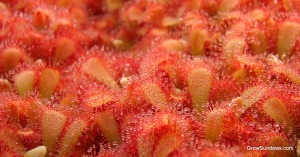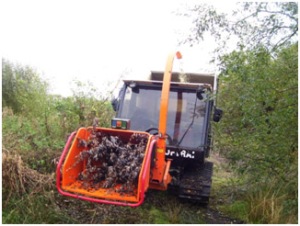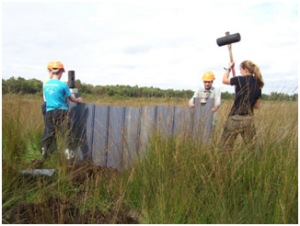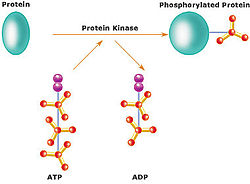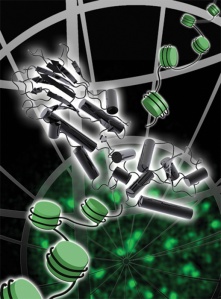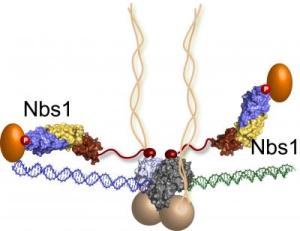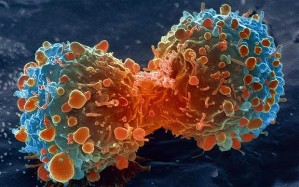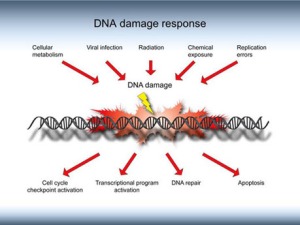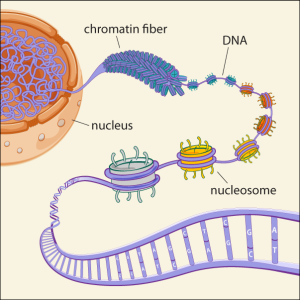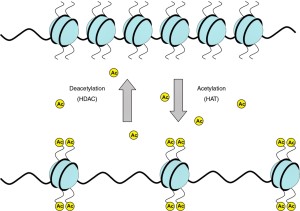How The Seminars Have Influenced My Career Plans
As part of this module i was looking forward to attending weekly seminars to experience interesting talks on various biological topics. At the start of the year a list of many of the talk subject areas was available, i noticed that many of these talks were zoology and environmental science themed. My areas of interest lie in cell and molecular biology, i was disappointed that only a small number of talks were in my area of interest however, after attending these talks I’ve found myself discovering interests in areas of biology that i would not have expected, particularly the Chat Moss Project seminar.
The seminars have definitively confirmed my passion for biology, it is a real pleasure to listen to researchers speak passionately about their subject areas. The seminars have had an interesting influence on my career plan. I no longer wish to pursue biology to a masters of PhD at this moment in time, however I do intend to stay in the biological industry. This may lead to careers at large bio companies such as New England Biolabs but on the marketing or sales side of things rather than research.
A combination of completing lab research and attending seminars this year has steered my current career path away from the research side of biology. The series of seminars i have attended this year have helped guide me towards a more certain career path.
The Chat Moss Project
This seminar was a pleasant surprise, my interests in biology lie more in medical and molecular aspects of the subject, i was expecting to not be too enthused by peatland and bogs but i was wrong, I found the talk very interesting and well presented.
The talk was given by Elspeth Ingleby, The Chat Moss Project officer for Lancashire Wildlife Trust. She exuded a passion for peatlands and her role in trying to save and restore them, she also gave of an eagerness to explain how important it is that we do this.
What is peatland?
An environment which is permanently waterlogged resulting in the stalling of organic decomposition due to low oxygen levels.
Bogs are a type of peatland, they receive all of their nutrients from rain water, hence have very little nutrients.
One of the key components of peat is sphagnum moss. This incredible moss can hold 16-26 times its dry weight in water, and is therefore a vital feature of peatland.
History of the Chat Moss Project
- Based in Greater Manchester
- The peatland moss originally occupied 2500 hectares
- By 1885 50% of the peatland was lost mainly due to agriculture which adds nutrients to the soil, this means hundreds of years would be needed to return the soil to peatland again
- 1978 – only 5 hectares left
- More recently, areas have been recovered leaving the total area of peatland at 300 hectares in the Chat Moss project
Why is peatland so important?
- The peatland ecosystem is described as the most efficient carbon sink on the planet. Peatland only covers 3% of the planet but store and astounding 15 to 30% of the carbon!
- Peatland can act as a buffer, it can reduce the risk of flooding by acting like a sponge to absorb large quantities of water. Once saturated it can then become a barricade against further water for a limited time.
- The distinctive ecological conditions provide habitats for rare fauna and flora such as wild orchids and carnivorous plants like sun dews. many animals also thrive in this habitat including brown hairs and water vowls, both struggling species in the UK
- The intrinsic value of wild space, particular near urban Manchester, it is important to retain areas of tranquility
- Peatland can reveal detailed insights into our past, the low nutrient levels mean that organic material such as giant trees or bog bodies can be preserved for thousands of years.
Management of the bogs
The Chat Moss is responsible for 3 sites for which they are actively acting to conserve and restore: Astley, Cadishead and Little Woolden Mosses. restoration of peatland is an expensive and time consuming process which involves:
- Scrub clearance – once cleared scrubs need to be removed off site to ensure they don’t release any nutrients (important to keep low nutrient environment). An easier approach is to burn of chip them.
- Block ditches – Small blocks at strategic places
- Remove invasive species
- Translocation of Sphagnum – may take up to 30 years to get adequate Shagnum naturally
- Propagate moss land plants – e.g. bog netal, bog rosemary
More detail about the importance of peatland and a guide to peatland restoration can be found HERE.
The future
The Chat Moss project continue to campaign to restore as much land as they can back to peatland while also trying to reduce and eradicate the use of peat in fertilizer. The governmet are already trying to phase out peat extraction however this is a difficult task as peat has been extracted for thousands of years and 4-5 big companies retain the rights to continue peat extraction.
Volunteers are of the up most importance to the survival of peatland. By working with local communities, the Chat Moss project aims to motivate volunteers to help restore and manage mosslands so that if funding were to end the project, local communities can continue in the mission to restore precious peatland.
If you are local to the project and are interested in volunteering the Facebook page can be found HERE.
To keep up to date on the Chat Moss project the Mosslands Blog can be found HERE
I personally found this talk very interesting, as stated previously I was not expecting to be that interested in this topic as my biological interests tend to be on the smaller scale of cells and molecules. I was fascinated by the vast amount of time it takes to create peatlands and how we can effectively see thousands of years into the past. The extremely well preserved bog bodies and provide astonishing glimpses into history. Overall i felt that the talk was very uplifting as it demonstrated how a project such as Chat Moss can bring communities together and get them excited about the wonders of wildlife and how important it is to preserve such a precious commodity.
This talk has made me more receptive to areas outside of my interests, this could possibly result in the application to jobs that I previously may have not had an interest in.
Assignment: Business Plan Essay
This was an area of the module which i felt wasn’t as useful as it could have been. The task was to deconstruct the business plan, explaining why each section is important.
After each section, I wrote an explanation of how this would be relevant and useful in my future career.
I found this task to be slightly tedious and repetitive. I understand the importance of being able to understand and write a good business plan, and so feel it would have been more advantageous to actually write a business plan.
Having said that, deconstructing each section has increased my comprehension of business plans and allowed me to realise the relevance of business plans and their use in almost every career.
As mentioned in my Dragons’ Den post it would make sense to incorporate the business from the dragons’s den event to create a business plan.
March Comments
Phospho-dependent interactions in the cell-cycle and DNA-Damage Response
Cell signalling is an intricate process which is vital to allow cells to function. Signalling occurs in dynamic, rapidly reversible cascades, most of which involve phosphorylation. Phosphorylation is the most common mechanism by which cells regulate protein function and transmit intracellular signals. This is achieved by proteins known as Kinases.
Kinases
- Mediate phosphorylation of proteins
- Creating a signal cascade that plays a critical roles in the regulation of many cellular processes including growth, apoptosis and signal transduction pathways.
- The human genome encodes for over 500 kinases, misregulation of phosphorylation is a primary cause of many cancers and other diseases.
Steve Smerdon from the National Institute for Medical Research visited Bangor University to speak about the importance of phospho-dependent interactions in structural biology.
The Smerdon group research a number of adapter and scaffold proteins including; 14-3-3, Breast Cancer Gene 1 (BRCA1), Nijmegen-breakage syndrome protein 1 (Ns1b) and many others.
These adapter and scaffold proteins function as platforms that allow the formation of multi-protein complexes via the activities of protein modules such as Forkhead-associated (FHA), Brca1 C-terminal (BRCT)-repeat and the polo-box. These protein modules are activated after phosphorylation by kinases.
MRN compex
- composed of Mre11-Rad50-Nbs1
- at sites of DNA double strand breaks, this complex acts as a bridge to bring both strands together and promote end rejoining.
- referred to as the ‘molecular computer’ as it is involved in many processes including; End-recognition, tethering, resection and checkpoint signalling.
These proteins are of interest as they are regulated by kinases, and therefore play a crucial role in the DNA damage response.
These proteins all interact in a complex and extensive web of molecular interactions, by understanding more about these processes and why they run amok, drugs can be designed to specifically target and combat the disastrous effects associated with cancer and other diseases.
It is clear that phosphorylation plays a vital role inside cells. With research teams like the Smerdon group discovering the in depth detail of the structural biological mechanisms behind these phospho-dependent interactions, we move towards a future filled with a higher comprehensivenss into how cells work. This will hopefully correlate to an increase in our arsenal of drugs in the war against cancer and other diseases.
Papers:
A supramodular FHA/BRCT-repeat architecture mediates Nbs1 adaptor function in response to DNA damage
The BRCT domain is a phospho-protein binding domain
Dragons’ Den
The Dragons’ Den day was set out to create a business idea in groups and pitch that idea to the dragons at the end of the day. For our Business idea we were given the option to use Brambell museum, Treborth Botanical Gardens or create a business of our own.
My group decided to use Treborth Botanical Gradens as a venue to host an annual festival celebrating welsh culture. We divided the business into different aspects (e.g. marketing, products and services, costs etc.) to try and create the most in depth business model possible in the short time we had.
The festival would be targeted to local welsh residents and would display events such as dog shows, Wales’ strongest man, it would also promote produce from local welsh businesses. As a group we decided that a percentage of the profits from the festival would be reinvested to the botanical gardens.
We then created a short 20 second advert and planned our final pitch.
After the pitch to the dragons we were graded by fellow students.
I feel that the days experience was somewhat rushed but nevertheless a useful one. It was a beneficial exercise consisting of team work and time management. It may have been more advantageous if the business created during this day was the used in the construction of our business plans.
February Comments
CV Construction
A good CV is paramount to increase individual employability. Attending lectures on how to contruct an ‘ideal’ CV was useful during my quest to create a great CV.
Employers have mountains of CVs to read and the smallest of mistakes may result in instantaneous rejection.
There are numerous common mistakes found in many CVs that can be prevented. Many of these mistakes are small and easily fixable:
- Titling it Curriculum Vitae (simply not necessary)
- Long-winded personal details and education (get straight to the point)
- A length more than 2 pages (or 1 page in the USA) – the importance of knowing your audience
- Including irrelevant material (such as very previous work history)
Taking note of minor things can have vast consequences. some of the best advice i gained was to imagine yourself receiving your own CV as an employer, this taught me how i could make my CV stand out.
Another essential lesson I have learnt is the importance of having a concise and well-ordered CV, the CV needs to look visually appealing while also conveying essential information about yourself quickly to the employer, this may increase your chances of gaining an interview.
DNA Damage Repair and Chromatin
DNA is under constant assault from a variety of environmental and endogenous factors including UV radiation from sunlight, we recieve around 10,000 DNA damaging events everyday of our lives. To combat this there are a variety of safeguard systems present in cells which counteract these genetic insults and act to repair damaged DNA.
One of the most versatile DNA repair systems is nucleotide excision repair (NER). This DNA repair system acts on single stranded DNA that may have been damaged by ultraviolet light (UV). Deficiencies in this repair pathway due to genetic mutation of NER proteins can lead to diseases such as Xeroderma Pigmentosum and Cockaynes’s Syndrome.
Much of the information known about NER has come from biochemical studies that have analysed the repair reactions in DNA substrates that are not representative of living cells. This is because in cells DNA is packaged into chromatin by wrapping around proteins known as histones. This process of chromatin formation is refractory to many DNA processes including replication and repair, therefore, it is important to understand how NER is performed in the context of DNA-Histone interactions.
Professor Simon Reed of Cardiff University visited Bangor University to speak about how NER is organized throughout the yeast genome. This included an explanation on how yeast cells orchestrate the repair of chromatin when damaged by UV radiation.
When DNA is densely packaged around Histones (chromatin) it prevents access of DNA repair proteins to the DNA. Histones can be modified, acetylation of histones results in a more open chromatin structure meaning DNA can be more efficiently repaired.
Professor Reed and his team at Cardiff have focused on the Global Genome NER complex (GGNER). They have shown that the GGNER complex functions and relates to the acetlylation of histone H3. The complex achieves excision of damaged DNA by generating superhelical torsion. This torsion is generated by the sliding activity of nucleosomes (DNA wrapped around 8 histones).
They have also shown that certain histone variants such as the histone H2A variant, Htz1 has a positive function in promoting NER in yeast. Although these experiments use yeast as a model organism, a remarkably high similarity of these processes and mechanisms are found in human cells.
It is clear that the intricacies of cell processes are revealing a new level of complexity, implying that previous hypothesis and explanations are too simplistic. With the dawn of the post genomic next generation sequencing technology, the biological knowledge in these areas are increasing rapidly. it seems now, in this surge of technology and information, it is one of the most exciting times to be a molecular biologist.
Papers:
Nucleotide Excision Repair in Cellular Chromatin: Studies with Yeast from Nucleotide to Gene to Genome http://www.ncbi.nlm.nih.gov/pmc/articles/PMC3472735/
Histone variant Htz1 promotes histone H3 acetylation to enhance nucleotide excision repair in Htz1 nucleosomes. http://www.ncbi.nlm.nih.gov/pubmed/23925126
Histone acetylation, chromatin remodelling and nucleotide excision repair: hint from the study on MFA2 in Saccharomyces cerevisiae. http://www.ncbi.nlm.nih.gov/pubmed/16082210


